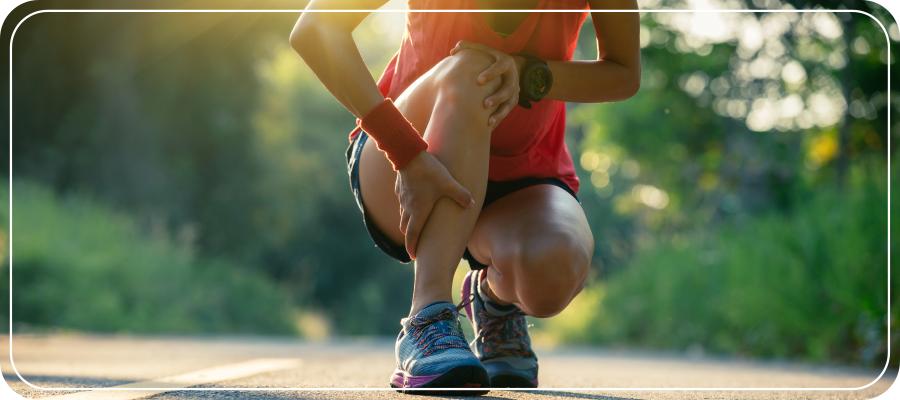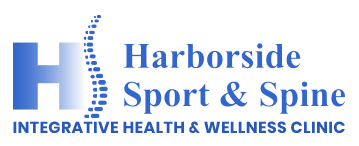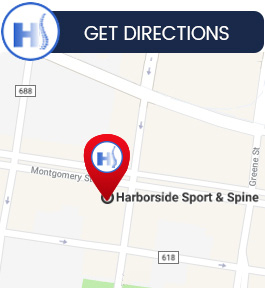Physical Therapy for Runner’s Knee Pain in Jersey City, NJ
The most popular and effective kind of treatment for runner’s knee is physical therapy. Physical therapy can help you feel better about your posture and joint mobility, reduce pain, and become more pain-free when engaging in daily activities. Our board-certified Dr. David Sylvester, DC is here to help you at Harborside Sport & Spine. For more information, contact us or book an appointment online. We serve patients from Jersey City, NJ, and surrounding areas.




Table of Contents:
How do you fix a runner’s knee pain?
Can physical therapy help runners’ knees?
Can I walk with a runner’s knee?
What should I avoid with the runner’s knee?
How can Dr. David Sylvester, DC, at Harborside Sport & Spine help you recover from runner’s knee?
One of the first steps in managing runner’s knee pain is to implement the RICE protocol, which includes resting the injured knee, putting on ice packs to limit inflammation, using compression bandages or knee braces for support, and elevating the leg to reduce swelling. This helps by relieving the pain and promoting healing.
Physical therapy is often an essential part of the treatment plan for runner’s knee. This involves targeted exercises to strengthen the muscles around the knee, particularly the quadriceps and hip muscles, as well as stretches to improve flexibility. Toughening up these muscles will help to stabilize the knee joint and alleviate stress on the patella. Additionally, physical therapists may use various techniques such as ultrasound, electrical stimulation, or manual therapy to accelerate healing and reduce pain.
Modifying activity and training routines can also play a crucial role in managing runner’s knee pain. It might be needed to temporarily reduce or modify the intensity, duration, or frequency of running or other high-impact activities. Cross-training with low-impact exercises, such as swimming or cycling, can provide cardiovascular fitness without exacerbating knee pain. Gradually reintroducing running and monitoring for any signs of discomfort or pain is important to prevent further aggravation.
Yes, physical therapy can be highly beneficial for individuals with runner’s knee. Physical therapists are trained to evaluate and treat musculoskeletal conditions, including runner’s knee. They can develop a tailored treatment plan that could involve exercises for strengthening the muscles in and around the knee, improving flexibility, and correcting any imbalances or weaknesses that may be contributing to the pain. Physical therapy can also include various modalities such as ultrasound, electrical stimulation, and manual therapy techniques to reduce pain, promote healing, and improve overall function. The advice and skills of a physical therapist can be invaluable in taking control of runner’s knee and helping individuals safely return to their running activities.
In most cases, individuals with runner’s knee can continue walking as long as the pain is manageable. Walking is considered a low-impact activity and typically has less strain on the knees compared to running. However, it is important to pay attention to your body and be cautious of any worsening pain or discomfort. It may be helpful to modify your walking routine by incorporating rest days, reducing the duration or intensity of your walks, and using proper footwear with cushioning and support. Applying ice to the affected knee before and after walks can also help reduce inflammation and alleviate discomfort. It is imperative to meet with a healthcare professional or physical therapist for a correct diagnosis and unique treatment plan to address the underlying causes of runner’s knee and to ensure that walking and other activities are approached safely and effectively to promote healing and recovery.
If you have runner’s knee, it is important to avoid activities and behaviors that can further aggravate the condition. High-impact exercises like running, jumping, or playing high-intensity sports should be minimized or temporarily halted to prevent excessive strain on the knee. These activities can increase impact forces and place additional stress on the knee joint, possibly ending up with increased pain and inflammation. It has also been noted to avoid activities that require repetitive bending of the knee, such as climbing steep inclines or squatting, as these movements can exacerbate the symptoms of runner’s knee. Engage in these activities with caution and modify if necessary to alleviate stress on the knee joint. Furthermore, walking or exercising on uneven surfaces, such as hiking trails or rough terrains, should be avoided as they can further strain the knee and impede the healing process. Opting for well-padded, supportive footwear can also help cushion the impact and reduce strain on the knee joint. Taking regular breaks and ensuring adequate rest periods in between activities is crucial to allow the knee to rest, recover, and heal properly. Overdoing physical activity without proper rest can potentially worsen the symptoms and delay the recovery process. Always find a balance and listen to your body, adjusting the intensity, duration, and frequency of your activities as needed.
Meeting with a healthcare professional or physical therapist is recommended to obtain personalized advice and guidance specific to your condition, as they can provide you with appropriate modifications, exercises, and rehabilitation techniques to manage a runner’s knee effectively while minimizing further damage.
Runner’s knee, or patellofemoral pain syndrome, is a common condition that causes pain around the kneecap—often due to overuse, poor biomechanics, or muscle imbalances. At Harborside Sport & Spine, Dr. David Sylvester, DC, offers targeted physical therapy programs to relieve knee pain and restore proper movement patterns.
After a detailed assessment, Dr. Sylvester creates a personalized treatment plan that may include strengthening exercises, manual therapy, gait analysis, and flexibility training. He focuses on correcting improper tracking of the kneecap and improving hip, glute, and core strength to support long-term joint health. At Harborside Sport & Spine, therapy is tailored to your running goals—whether you’re training for a race or just want to enjoy pain-free workouts again. For more information, contact us or book an appointment online. We serve patients from Jersey City NJ, Hoboken NJ, Weehawken NJ, West New York NJ, Guttenberg NJ, Secaucus NJ, Harrison NJ, Kearny NJ, Newark NJ, Belleville NJ, Lyndhurst NJ, East Orange NJ, and Elizabeth NJ.
Check Out Our 5 Star Reviews


Chiropractic and Physical Therapy Services
▸ Chiropractic
▸ Physical Therapy
▸ Massage Therapy
▸ Acupuncture
▸ Spinal Decompression
▸ Prenatal Chiropractor
▸ Ear Infections
▸ Foot Pain
▸ Headaches
▸ Scoliosis
▸ Slipped Disc
▸ Sprained Ankles
▸ Stress
▸ Frozen Shoulder
▸ Osteoporosis
▸ Shoulder Pain






